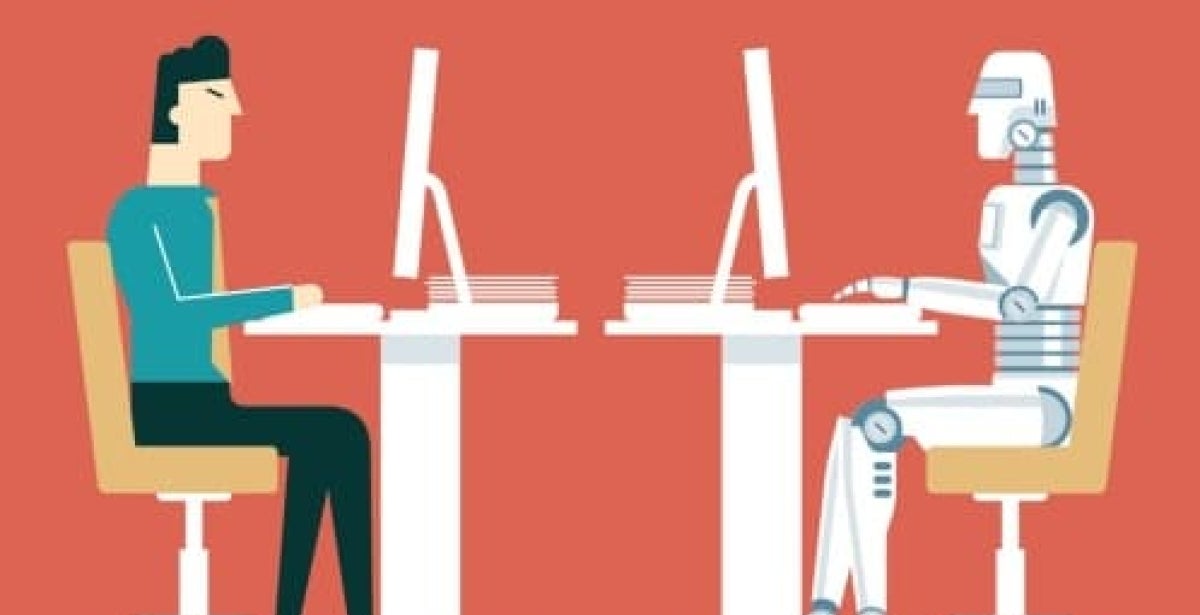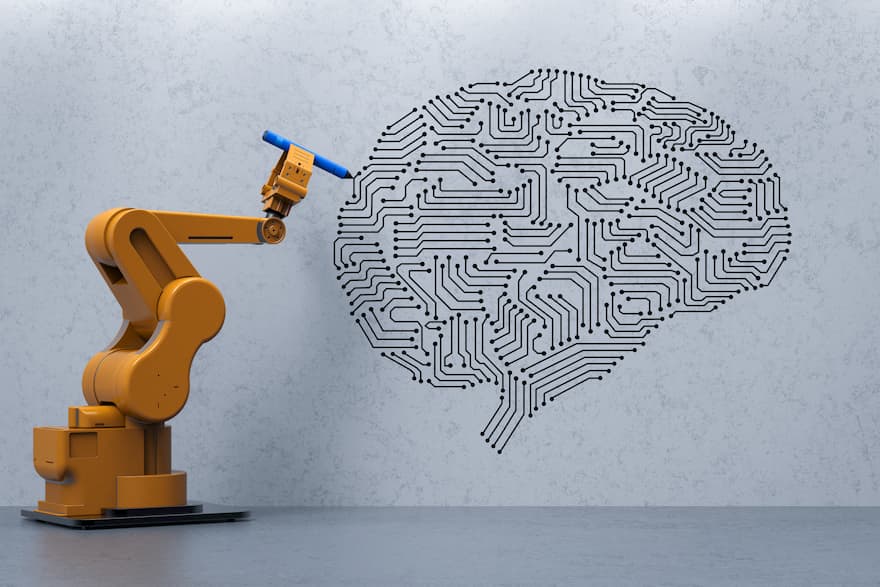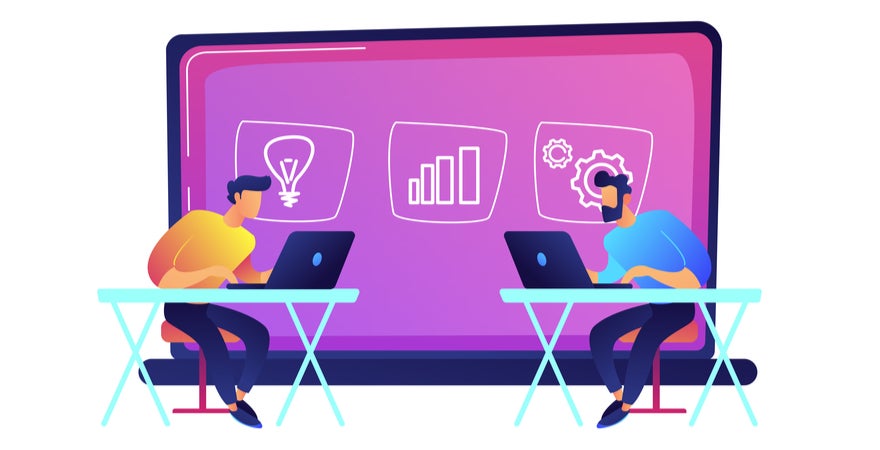
The future of education – how will AI and machine learning make an impact?
The past has always re-imagined the future – often with visions of flying cars, hoverboards and holographic movies. But what might the job market look like in the future and how will training, and education need to change?
The new era of work
Picture a world with driverless agricultural tractors that self-sow, robotic arms that lay bricks, supermarkets that are run entirely by artificial intelligence and fast food served by droids. This is a reality we’re coming closer to with accelerating advances in technology.
Automation, robotics, and artificial intelligence (AI) are already changing models for work, and soon people will be working alongside machines. According to the 2017 McKinsey Global Institute report, Jobs lost, jobs gained: Workforce transitions in a time of automation the impact of automation will be far-reaching across the entire global workforce. The report states that ‘60 per cent of occupations have at least 30 per cent of constituent work activities that could be automated.’ In summary, the report explains that the potential labour market disruptions will be significant, with the impact varying by occupation and sector.
Edith Cowan University’s (ECU) Master of Education, Leading Education specialisation Course Coordinator Dr Christine Cunningham elaborates on these findings. She says, “While about half of all work activities globally have the technical potential to be automated, the proportion of work actually displaced by 2030 will likely be lower because of technical, economic and social factors that will slow down those changes.”

Potential jobs on the horizon
Alongside automation, trends in globalisation and urbanisation will have a profound effect on the future of work. The dynamics in the labour market will also be driven by the growth of the green economy and a rapidly ageing worldwide population.
Despite these developments, Dr Cunningham says, “Jobs that are only requiring secondary education will be lost to automation, while those roles requiring bachelor level and higher will continue to grow.”
This transition into a new phase in employment history will likely mean that by 2030 a sizeable section of the global workforce will need to switch jobs, with 20 percent of workers camped in the vulnerable category. Yet, with this disruption comes opportunities for the creation of new roles and occupations.
The industrial revolution shifted workers from farms to factories. In the age of automation and AI, humans will be collaborating with machines for greater productivity and problem-solving. So, when some tasks are automated, occupations won’t necessarily completely disappear. Rather, the activities done more efficiently by machines will be automated, while humans will perform new tasks requiring decision-making, logical reasoning and creativity.
According to the Future of Skills: Employment in 2030 report, jobs that require the human-specific characteristics of empathy and judgment will continue to thrive and increase, particularly in fields such as education, healthcare, and public sector occupations.
In other words, jobs of the future will require social skills to complement more technical abilities, as technology takes over rote tasks.
Future trends in education: adapting to workforce change
As work becomes displaced by automation – and how we earn a living is redefined – there are implications for workforce skills and future trends in education. Dr Cunningham says, “For the future, all countries will need to make an increased investment in education and workforce training.”
“Policymakers and education leaders will need to embrace automation’s benefits and at the same time address the transition necessary for students and workers brought about by these technologies,” she adds.
While on-the-job retraining is a necessary step to future-proof careers – upgrading existing skills or teaching staff new abilities – the role of ongoing education becomes somewhat crucial. According to the World Economic Forum report, Accelerating Workforce Reskilling for the Fourth Industrial Revolution ‘a new deal for lifelong learning is needed globally to provide deeply fulfilling careers to future workers while enhancing social cohesion and equity.’ The report states, ‘Adaptation to shifting labour market needs requires continuous learning and a considerable paradigm shift from the current frontloaded education system model.’
Children who entered school in 2018 will be young adults in 2030. To ensure their success, a forward-thinking education system is required to prepare these students for an unknown future and the employment challenges that may lay ahead. The Future of Education report explores emerging trends in Australia’s education system and states that ‘prioritising the development of problem-solving, communication, creativity and critical thinking skills in students will enable educators to meet the growing demand for valuable lifelong skills which will also equip them for the changing workforce.’
Future education technology: the next digital frontier
Just as technology is set to disrupt the future workplace, it will also change the way we learn, and turn the traditional approach to teaching on its head. On top of the list of digital transformation trends is personalised learning. So, rather than a one-size-fits-all strategy, students will be able to use apps and devices to build their own personal learning profile. This also means that teachers can use AI to group student activities based on their learner models.
Applying AI and data, teachers will also be able to shift away from standardised testing. By studying digital classroom insights, teachers will have the ability to analyse each student’s learning activities. This means they can develop a concrete understanding of their ongoing progress and how they arrived at certain conclusions, rather than using stop and test methods.
In a more experimental sense, teachers will turn to augmented reality (AR) and virtual reality (VR) to allow students to have a deeply immersive educational experience. This means medical students could virtually dissect a body and gain a realistic sense of each organ, while history students could conduct an up-close study of the contours and construction of one of the most famous works of ancient Greek sculpture, the Venus de Milo.
Future education technology is likely to also incorporate 3D Printing, analytics, big data, and the internet of things (IoT). One thing’s for certain, education needs to keep evolving and keep pace with workplace transformation.

A degree that’s future-proof
ECU’s Master of Education, Leading Education specialisation will foster an environment where students can exchange ideas about future trends in education and future education technology. Students can compare education practices and dissect current research and contribute to a new ecosystem of learning.
Learn this and more with the Master of Education Leading Education specialisation.



